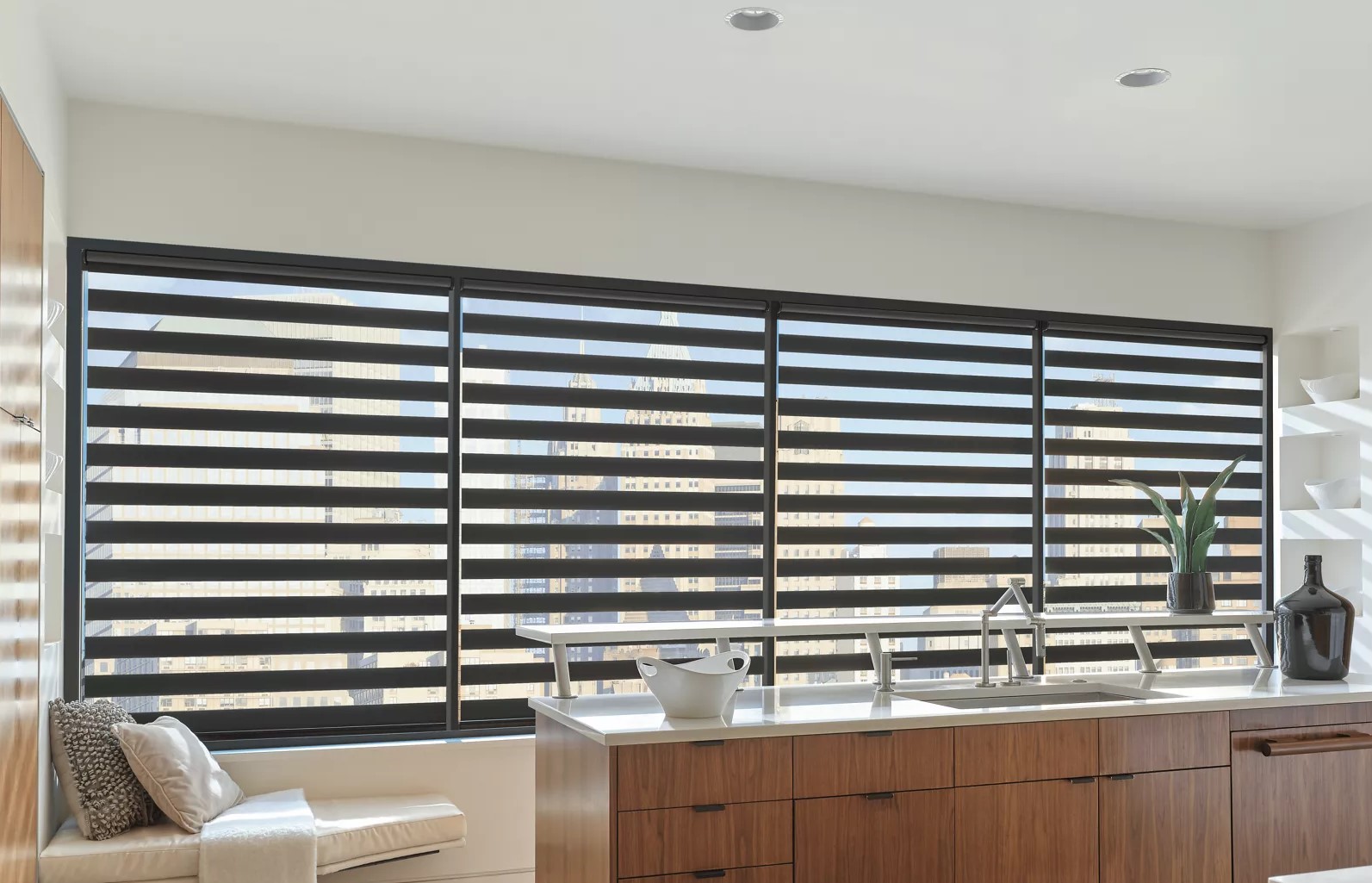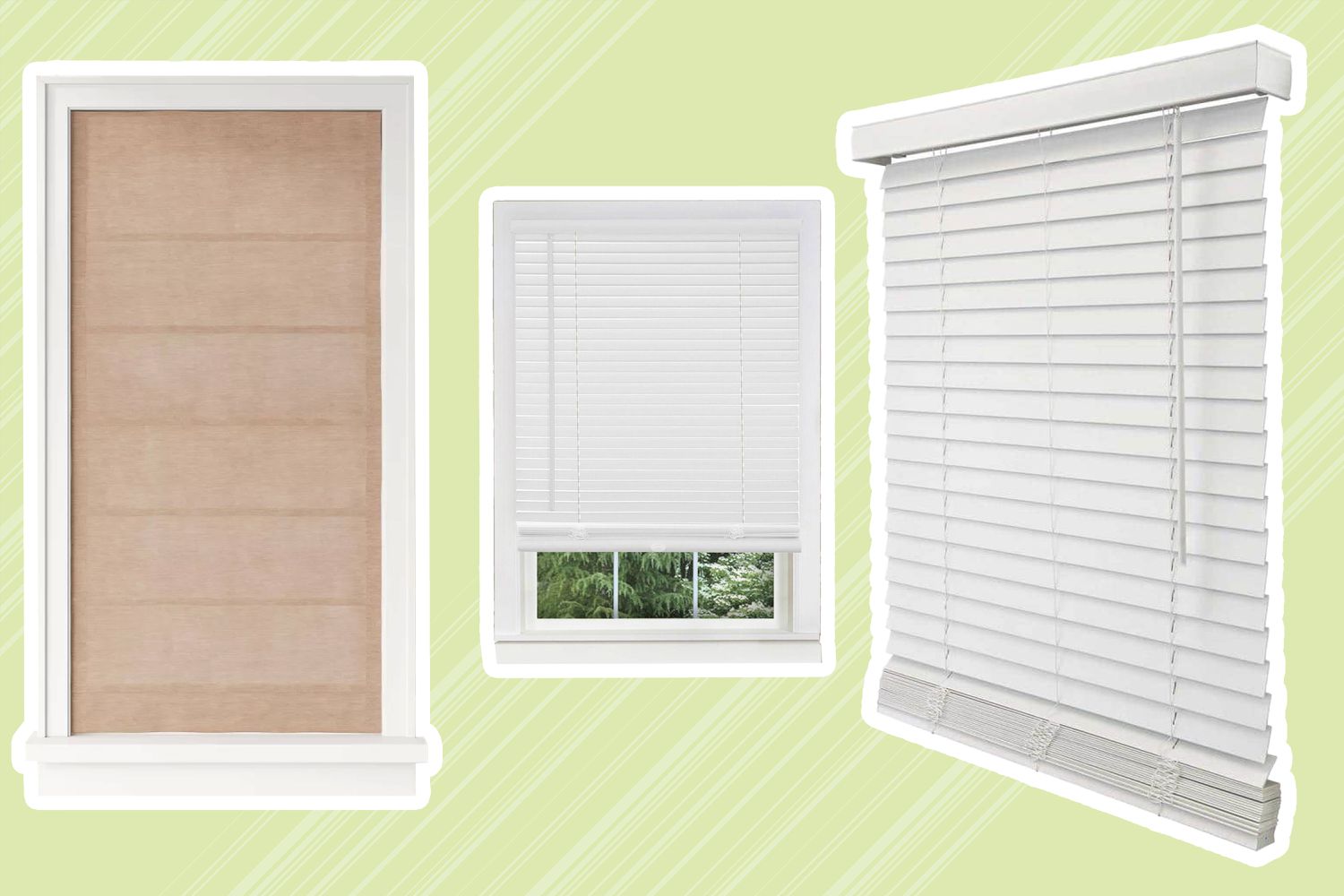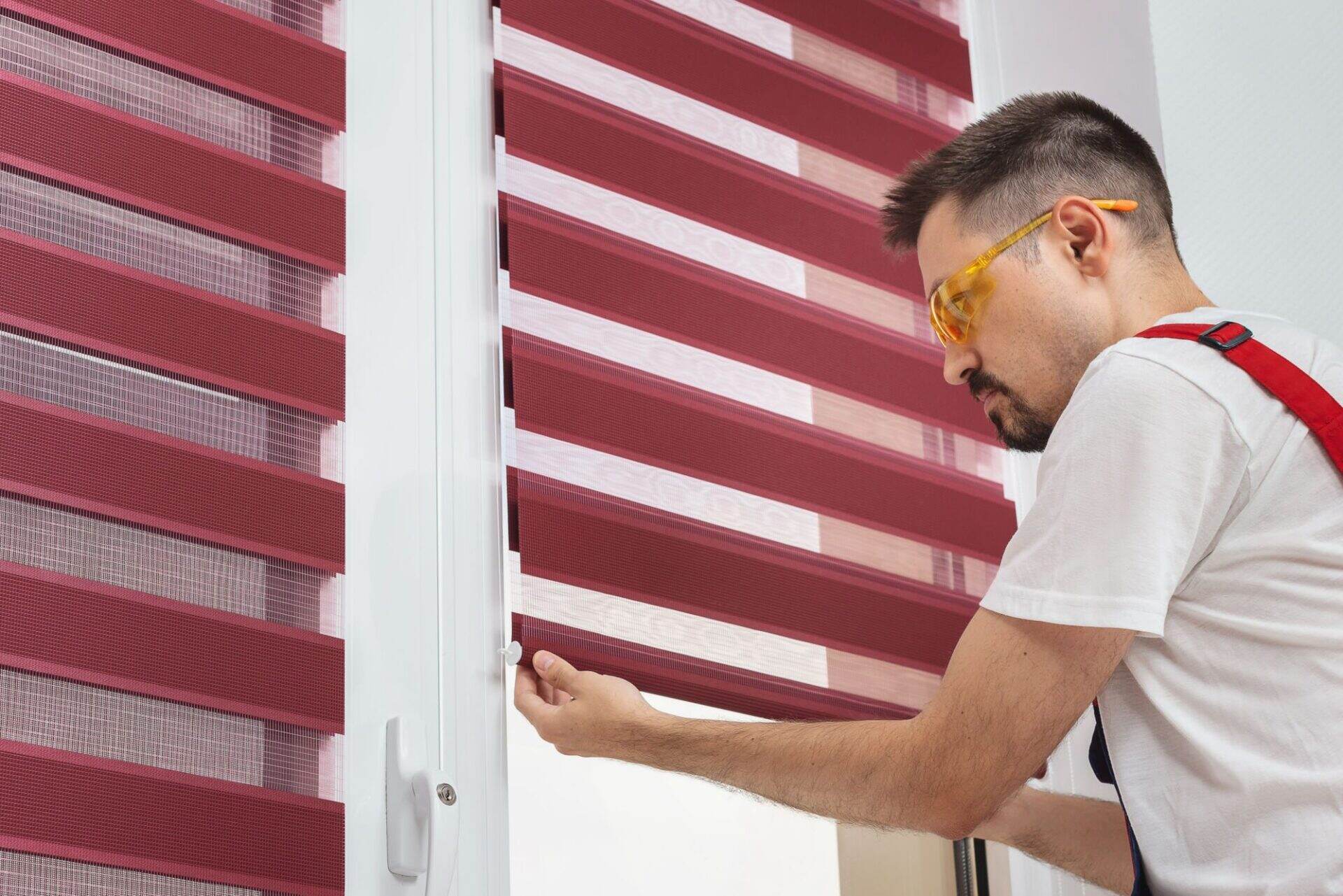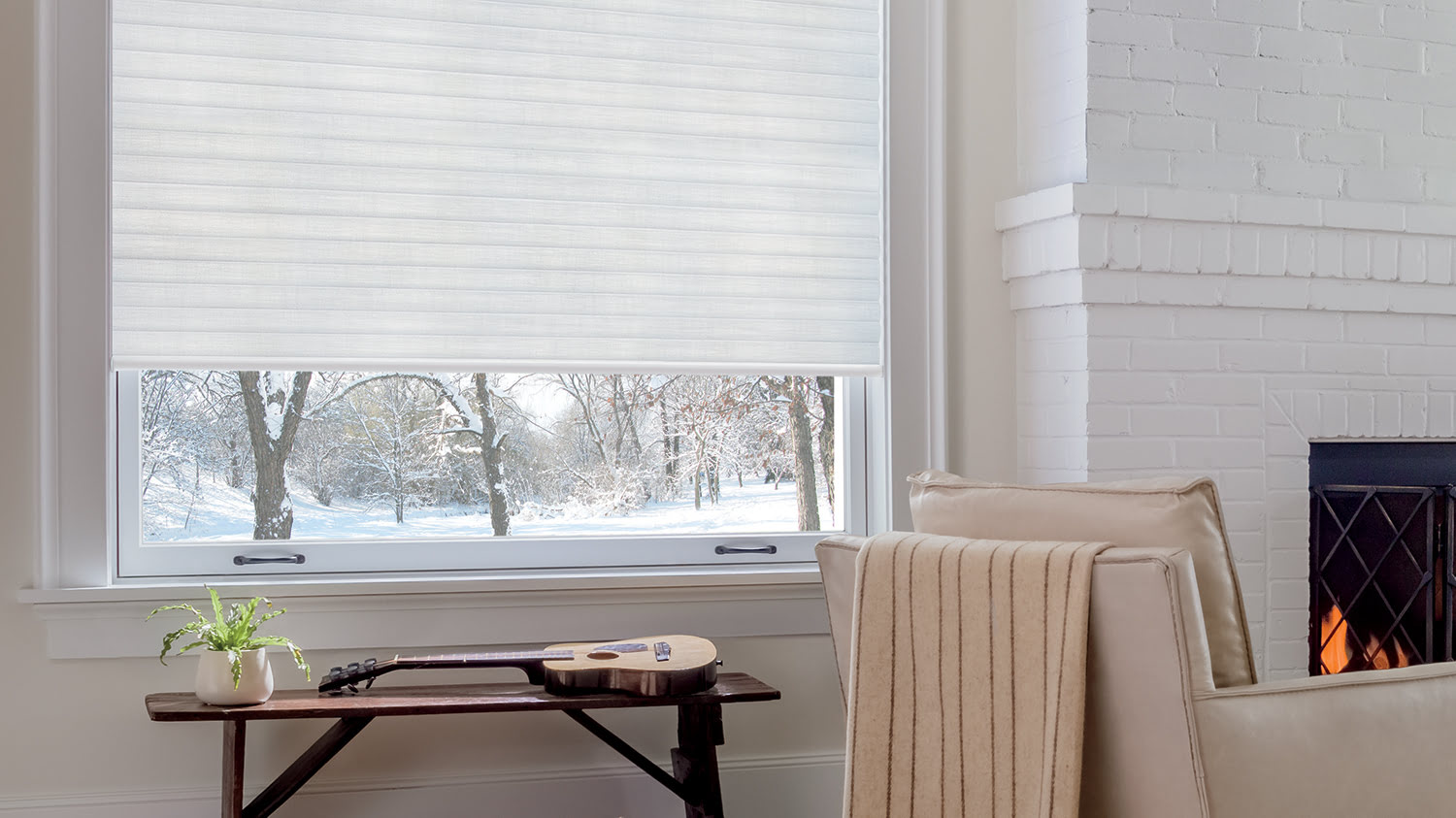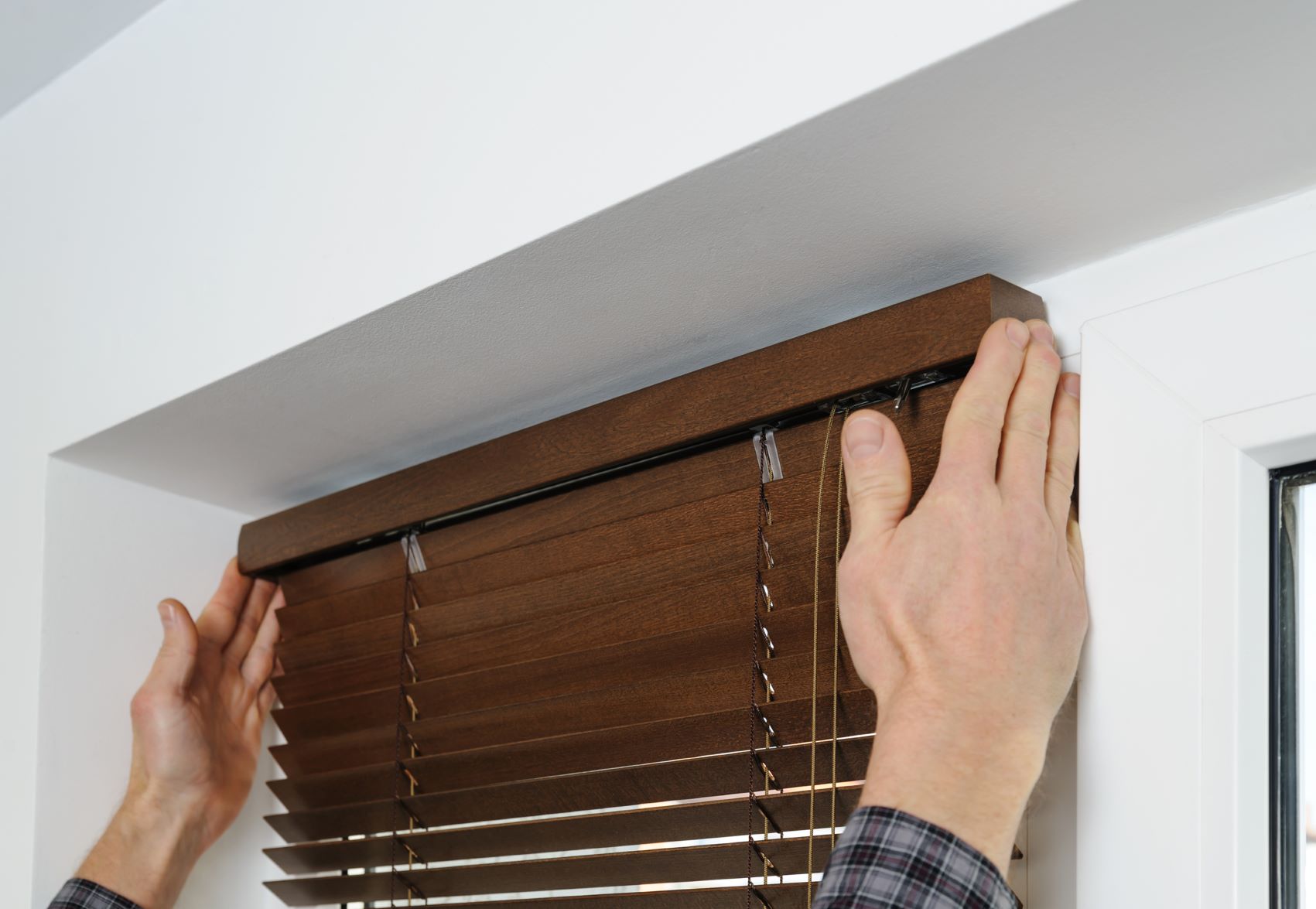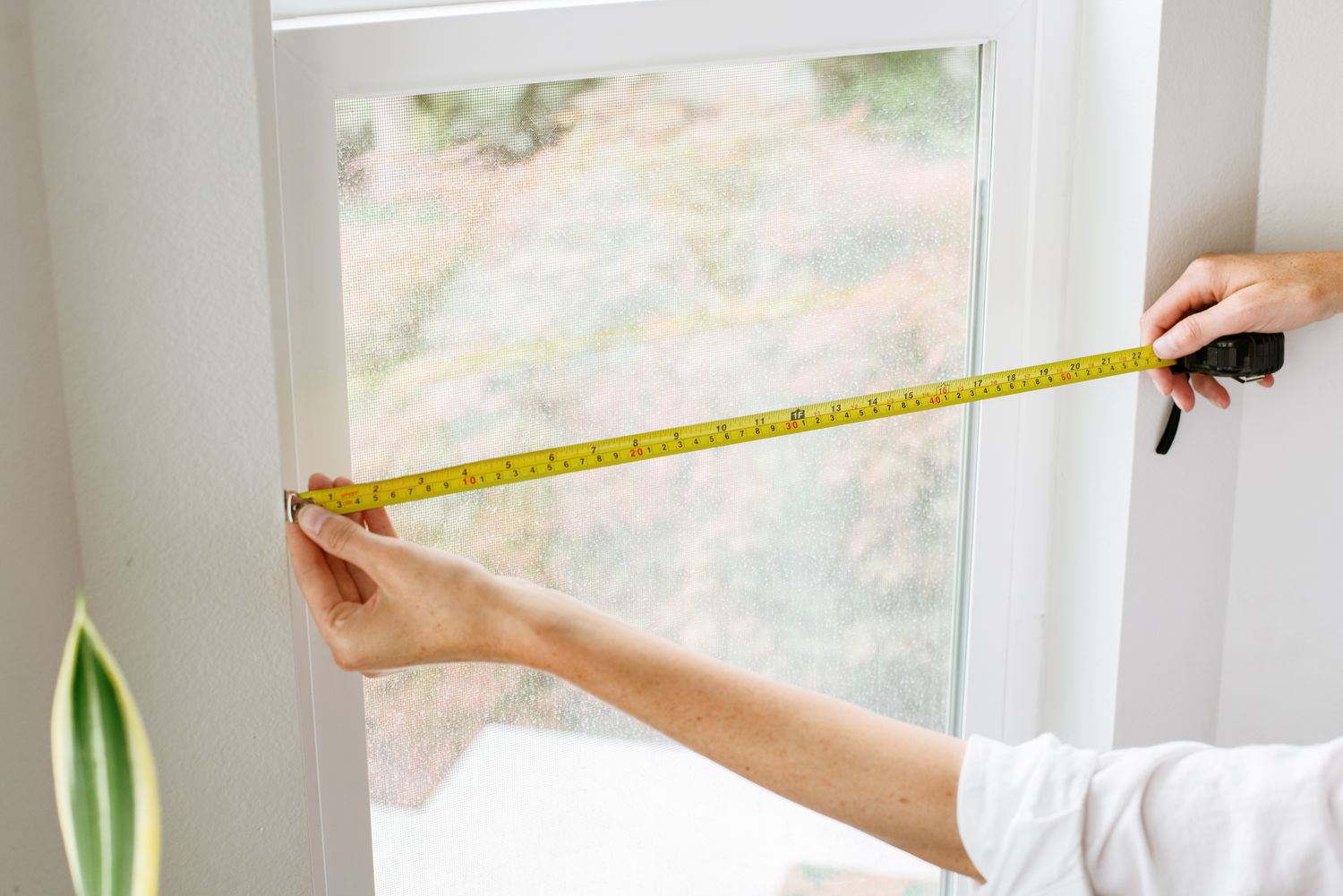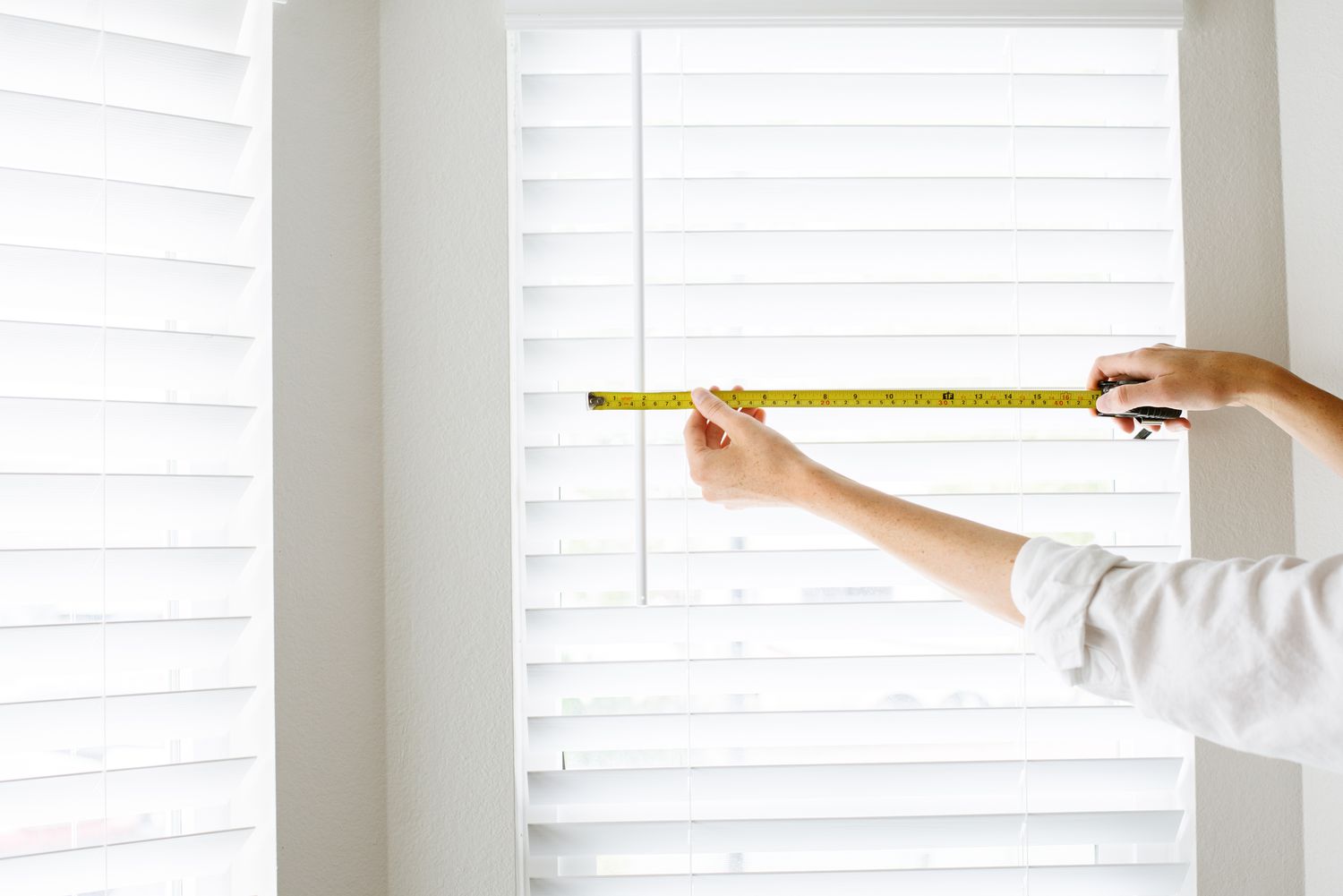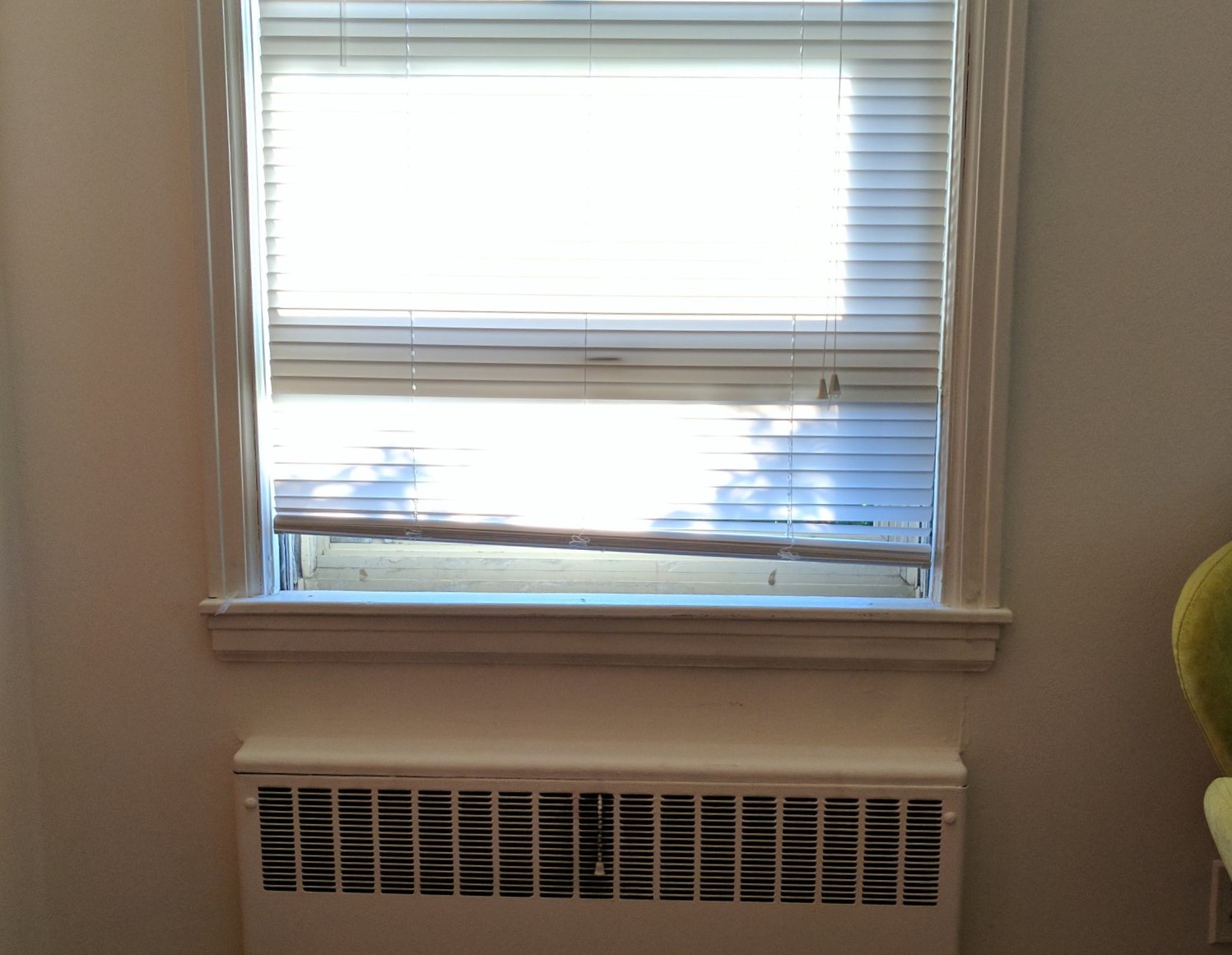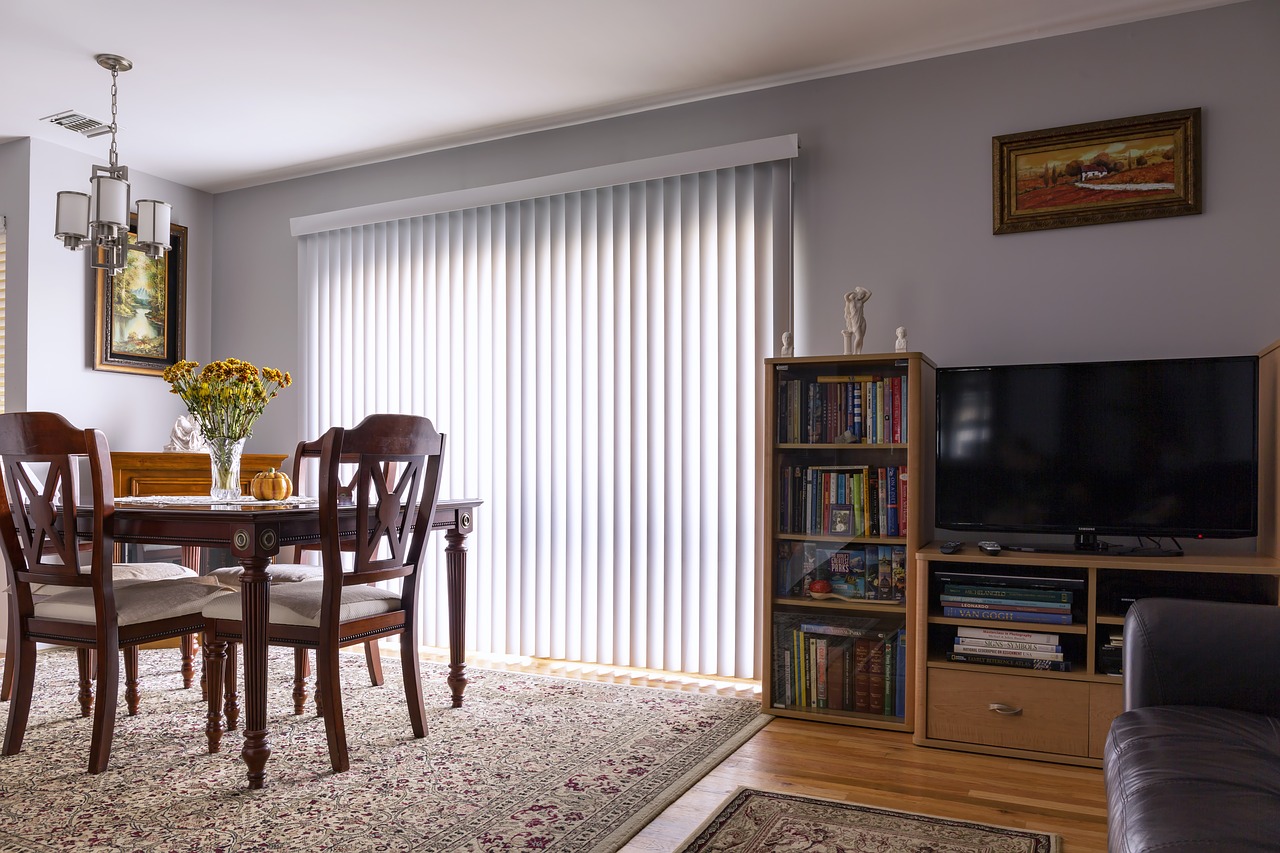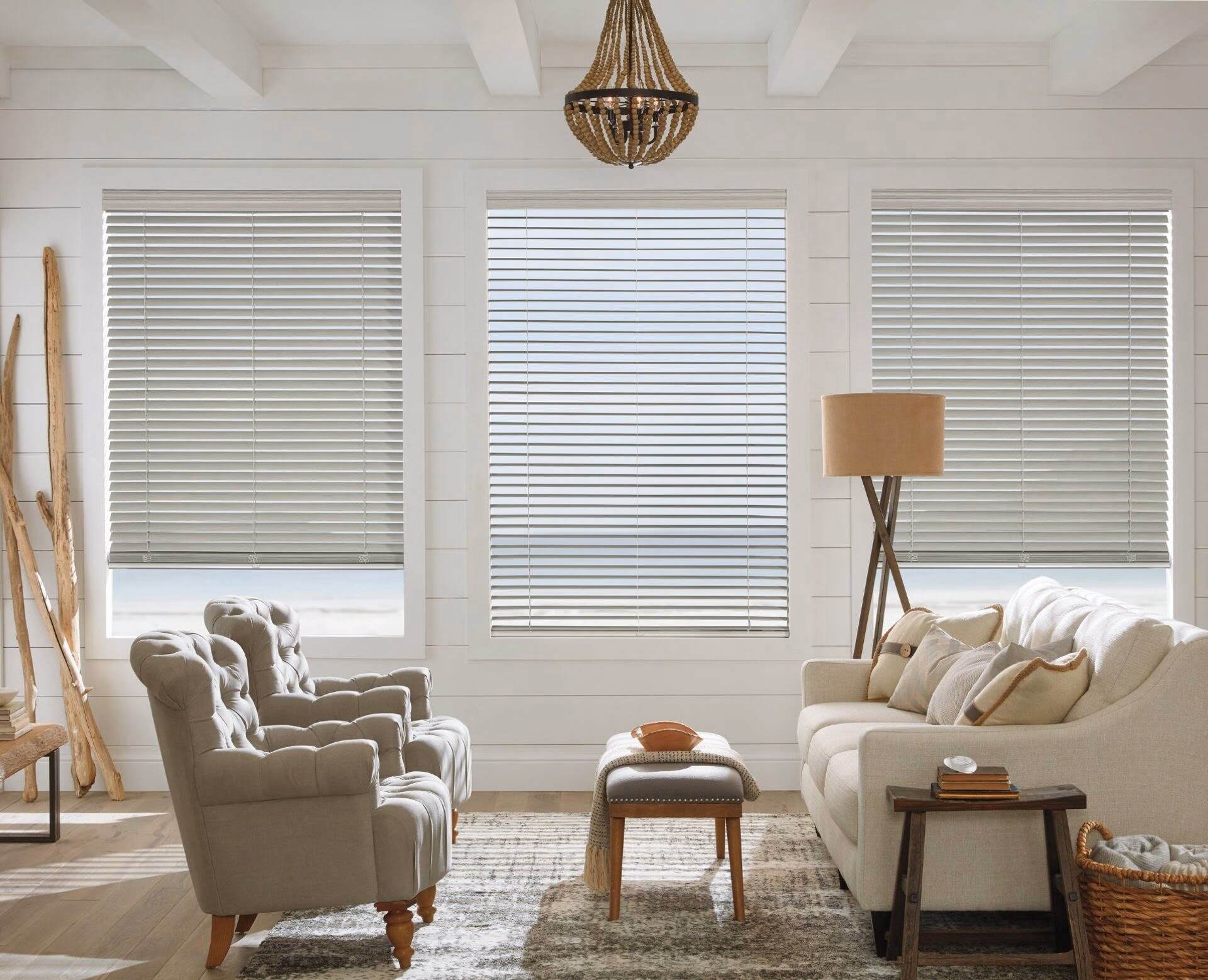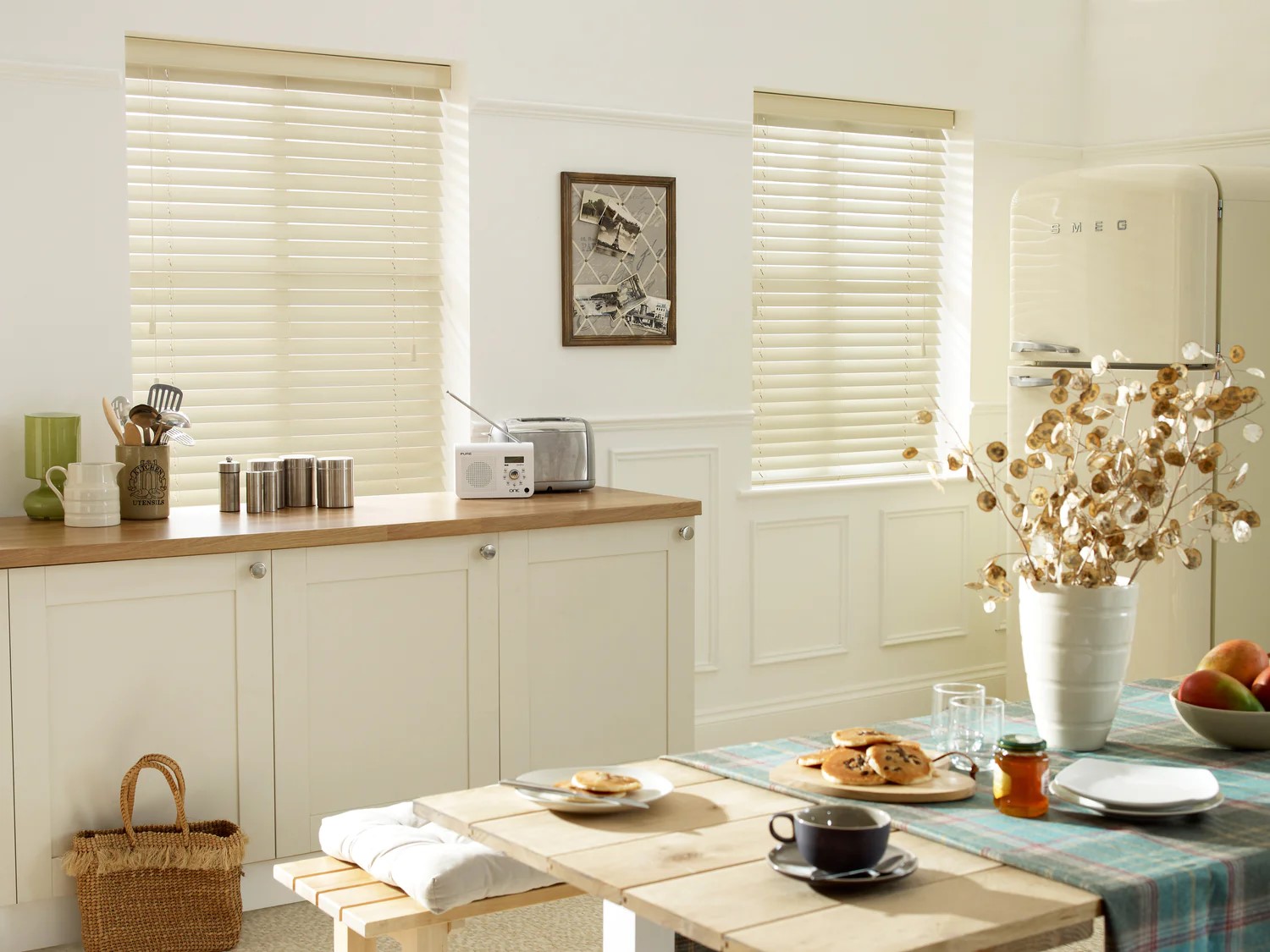

Articles
What Is Window Blinds
Modified: January 18, 2024
Discover the benefits and various types of window blinds through our informative articles. Get expert insights and find the perfect blinds for your windows today!
(Many of the links in this article redirect to a specific reviewed product. Your purchase of these products through affiliate links helps to generate commission for Storables.com, at no extra cost. Learn more)
Introduction
Window blinds are an essential component of any home or office space. They not only add a stylish touch to your windows but also provide a range of practical benefits. Whether you want to control the amount of natural light entering a room or enhance your privacy, window blinds are your go-to solution.
Window blinds are versatile window coverings that come in various materials, styles, and designs to suit different preferences and needs. From traditional horizontal blinds to modern roller shades, the options are endless. By choosing the right window blinds, you can transform the look and functionality of your space.
In this article, we will explore the world of window blinds, including their different types, the benefits they offer, factors to consider when choosing them, installation techniques, maintenance tips, and common issues you may encounter along the way.
So, let’s dive in and discover everything you need to know about window blinds!
Key Takeaways:
- Window blinds offer versatile light control, privacy, and energy efficiency, enhancing the aesthetic appeal of any space. With various types and materials available, they provide a functional and stylish solution for controlling natural light and airflow.
- When choosing window blinds, consider factors such as style, light control, privacy, window size and shape, functionality, and budget. Regular maintenance and addressing common issues promptly ensure the longevity and smooth operation of window blinds, making them a valuable addition to any room.
Read more: What Is The Standard Window Size For Blinds
What Are Window Blinds?
Window blinds are window coverings that are designed to control the amount of sunlight, heat, and privacy in a room. They consist of individual slats or panels that can be adjusted to regulate the flow of light and air into the space. Window blinds are typically made from various materials, including fabric, vinyl, wood, aluminum, or composite materials.
These coverings are available in a wide range of styles, such as horizontal blinds, vertical blinds, roller blinds, cellular shades, and Roman shades. Each type of window blind offers its own set of distinctive features and benefits.
Horizontal blinds, also known as Venetian blinds, are the most common type of window blinds. They feature horizontal slats that are connected and can be tilted to adjust the amount of light entering the room. Vertical blinds, on the other hand, have vertical slats and are ideal for covering large windows and sliding glass doors.
Roller blinds consist of a single piece of fabric that is rolled up or down using a pulley system, offering a simple and sleek look. Cellular shades, also called honeycomb blinds, are designed with insulating properties to improve energy efficiency and sound-proofing abilities.
Roman shades are made from soft fabrics and fold up evenly when raised, creating an elegant and sophisticated appearance.
Window blinds provide several advantages apart from their aesthetic appeal. They offer excellent light control, allowing you to regulate the amount of natural light that enters your space. This is particularly useful in rooms where direct sunlight can cause glare on screens or fade furniture and flooring.
Furthermore, window blinds offer privacy by preventing outsiders from seeing into your home or office. Depending on the design, you can adjust the slats or panels to create the desired level of privacy while still allowing natural light to filter through.
With window blinds, you also have the flexibility to adjust the airflow and ventilation in a room. By tilting or opening the slats, you can let in a cool breeze or block out drafts, ensuring optimal comfort throughout the year.
Overall, window blinds provide a functional and visually appealing solution for controlling light, heat, privacy, and airflow in your space. The wide variety of styles and materials available ensures that you can find the perfect window blinds to complement your interior decor and meet your specific needs.
Different Types of Window Blinds
Window blinds come in a variety of styles, each offering its own unique features and benefits. Understanding the different types of window blinds will help you make an informed decision when selecting the right one for your space. Here are some of the most popular types of window blinds:
- Horizontal Blinds: Also known as Venetian blinds, horizontal blinds consist of horizontal slats that are connected and can be adjusted to control the amount of light entering the room. They are available in a range of materials, including aluminum, wood, and faux wood, offering various design choices to suit different decor styles.
- Vertical Blinds: Vertical blinds feature vertical slats and are ideal for covering large windows and sliding glass doors. They provide excellent light control and privacy options, and the slats can be tilted to control the direction of light.
- Roller Blinds: Roller blinds are a popular choice for modern spaces. They consist of a single piece of fabric that can be rolled up or down using a pulley system. Roller blinds offer a sleek and simple appearance and are available in a wide range of colors and patterns to complement any interior design.
- Roman Shades: Roman shades are made from soft fabrics that fold up evenly when raised. They create an elegant and sophisticated look and are available in a variety of textures and patterns. Roman shades provide excellent light control and insulation properties, making them an energy-efficient option.
- Pleated Shades: Pleated shades are similar to cellular shades but have a single layer of pleated fabric. They offer a clean and minimalistic appearance and are excellent for light control and privacy. Pleated shades are available in a wide range of colors and textures.
- Cellular Shades: Also known as honeycomb shades, cellular shades are designed with insulating properties that help regulate the temperature of a room. They consist of honeycomb-shaped cells that trap air and provide excellent insulation against heat and cold. Cellular shades are available in various light-filtering options to suit your desired level of natural light.
- Bamboo Blinds: Bamboo blinds are made from natural bamboo materials, adding a touch of nature to your space. They provide a warm and organic look and are available in different weaves and finishes. Bamboo blinds offer light control and privacy and can add a unique texture to any room.
- Shutters: Window shutters are a classic and timeless choice for window coverings. They are made from wood or synthetic materials and feature adjustable louvers that allow for precise light control and privacy. Shutters provide excellent insulation and aesthetic appeal to your space.
By considering the style, functionality, and materials of each type of window blind, you can choose the one that best suits your needs and enhances the overall look of your space. Whether you prefer a traditional, contemporary, or natural look, there is a window blind option to fit your personal style.
Benefits of Window Blinds
Window blinds offer a range of benefits that make them a popular choice for both residential and commercial spaces. Here are some of the key advantages of installing window blinds:
- Light Control: One of the primary benefits of window blinds is the ability to control the amount of natural light entering a room. By tilting the slats or adjusting the blinds, you can regulate the intensity and direction of light, creating a desired atmosphere and reducing glare on screens or furniture.
- Privacy: Window blinds provide an excellent level of privacy. Depending on the type of blind and the degree of openness, you can maintain privacy while still allowing natural light to filter through. This is particularly important for ground-level rooms or spaces facing busy streets.
- Aesthetic Appeal: Window blinds come in various materials, styles, and colors, allowing you to enhance the overall aesthetic appeal of your space. Whether you prefer a sleek and modern look or a more traditional and elegant style, there is a window blind option to match your interior decor.
- Energy Efficiency: Certain types of window blinds, such as cellular shades, are designed with insulating properties that help regulate the temperature in a room. They can help prevent heat loss during the winter months and reduce solar heat gain in the summer, leading to energy savings on heating and cooling bills.
- Durability and Longevity: Window blinds are generally built to last. Depending on the material you choose, window blinds can withstand daily wear and tear and retain their functionality and appearance for an extended period. This makes them a cost-effective investment in the long run.
- Easy Maintenance: Window blinds are relatively easy to clean and maintain. Most styles can be wiped clean with a damp cloth or dusted with a microfiber duster. Unlike fabric curtains or drapes, blinds do not require frequent washing or professional cleaning.
- Versatility: With various types and styles available, window blinds offer versatility in terms of design and functionality. You can choose blinds that fit different window sizes and shapes, including arched or angled windows. They can also be used in a variety of settings, from homes and offices to hotels and restaurants.
By considering these benefits, you can see why window blinds are a popular choice for window coverings. They offer practical advantages in terms of light control, privacy, energy efficiency, and easy maintenance, while also enhancing the overall look and feel of your space.
Factors to Consider When Choosing Window Blinds
When selecting window blinds for your space, there are several important factors to consider to ensure that you make the right choice. Here are some key factors to keep in mind:
- Style: Consider the overall style and theme of your space. Choose window blinds that complement the existing decor and enhance the aesthetic appeal of the room. Whether you prefer a contemporary, traditional, or natural look, there are blinds available in a wide range of materials, colors, and designs to match your style.
- Light Control: Determine the level of light control you require. Some blinds, such as horizontal or vertical blinds, offer excellent light control as the slats can be adjusted to regulate the amount of sunlight entering the room. Others, like roller blinds or sheer shades, may provide varying degrees of light filtering. Consider your preferences for natural light and privacy when making your selection.
- Privacy: Assess the level of privacy you need in the room. If privacy is a top priority, opt for blinds with slats or panels that can be closed tightly to prevent outsiders from seeing into your space. Vertical blinds or cellular shades with blackout fabric are good options for maximum privacy.
- Window Size and Shape: Consider the size and shape of your windows. Measure accurately to ensure that the blinds you choose will fit properly. Some blinds, such as roller blinds or roman shades, are available in customizable sizes to perfectly fit your windows. For uniquely shaped or large windows, you may need custom-made blinds.
- Functionality: Determine how you want your blinds to operate. Most blinds offer adjustable slats or panels that can be controlled manually, but there are also options for motorized or remote-controlled blinds for added convenience. Consider the ease of use and accessibility when choosing the operating mechanism.
- Maintenance: Consider the level of maintenance required for the blinds. Some materials, like wood or fabric, may require more frequent cleaning or special care compared to vinyl or aluminum blinds. Think about your lifestyle and maintenance preferences before making a selection.
- Budget: Set a budget for your window blinds. The cost of blinds can vary depending on the material, style, and size. Determine how much you are willing to spend and explore different options within your budget range.
By considering these factors, you can make an informed decision when choosing window blinds. Take into account the style and functionality you desire, as well as the specific needs of your space, such as privacy and light control. With careful consideration, you can find the perfect window blinds that not only meet your requirements but also enhance the overall beauty and functionality of your room.
When measuring for window blinds, always measure the width at the top, middle, and bottom of the window to account for any variations in size. This will ensure a perfect fit.
Read more: What Blinds Are Best For Big Windows
How to Install Window Blinds
Installing window blinds is a relatively straightforward process that can be done by following a few simple steps. Here is a general guide on how to install window blinds:
- Gather Supplies: Before you begin the installation process, make sure you have all the necessary supplies. This typically includes the blinds, mounting brackets, screws, a screwdriver, a measuring tape, and a pencil.
- Measure the Window: Start by measuring the width and height of the window opening. Use a measuring tape to ensure accurate measurements. It’s important to measure both the inside of the window frame and the outside, as this will determine whether the blinds will be mounted inside or outside the window frame.
- Mounting Position: Decide whether you will mount the blinds inside or outside the window frame. Inside mounting provides a neater appearance, while outside mounting can make the window appear larger.
- Mounting Brackets: Hold the brackets up to the designated location and use a pencil to mark the screw holes. Ensure the brackets are level and evenly spaced. Pre-drill the screw holes to make installation easier.
- Install the Brackets: Attach the mounting brackets using the provided screws. Make sure they are securely fastened to support the weight of the blinds. Verify the levelness of the brackets before proceeding.
- Attach the Blinds: Depending on the style of blinds, follow the manufacturer’s instructions to properly attach them to the brackets. For most blinds, there will be a hook or slot mechanism that connects the blinds to the brackets. Ensure the blinds are properly aligned and functioning smoothly.
- Test and Adjust: Once the blinds are installed, test their functionality by opening, closing, and adjusting the slats or panels. Make any necessary adjustments to ensure smooth operation.
- Cord and Safety: If your blinds have cords, make sure to properly secure them and keep them out of reach of children or pets. Cordless blinds or those with built-in safety features are recommended for added peace of mind.
It’s important to note that the installation process may differ slightly depending on the type and brand of blinds you are installing. Always refer to the manufacturer’s instructions for specific guidelines and recommendations.
If you’re unsure about installing the blinds yourself, it’s recommended to consult a professional installer who can ensure proper and secure installation.
By following these steps and taking necessary precautions, you can successfully install window blinds and enjoy the beauty, functionality, and privacy they provide in your space.
Maintenance and Cleaning of Window Blinds
Maintaining and cleaning your window blinds regularly is essential to keep them looking their best and functioning properly. Here are some tips and guidelines for the maintenance and cleaning of window blinds:
- Dust Regularly: Dust your blinds often to prevent the build-up of dirt and dust particles. You can use a microfiber cloth, a feather duster, or a vacuum cleaner with a brush attachment to gently remove dust from the slats.
- Spot Cleaning: For small stains or spills, spot clean the affected area using a mild detergent and a soft cloth or sponge. Gently blot the stain without rubbing to avoid spreading it further. Rinse the area with a clean damp cloth and allow it to air dry.
- Deep Cleaning: Depending on the material of your blinds, you may need to deep clean them periodically. Fabric blinds can usually be hand washed or machine washed according to the manufacturer’s instructions. Wood or faux wood blinds can be wiped down with a soft cloth dampened with water and mild soap. Avoid using abrasive cleaners or excessive moisture on wood blinds to prevent damage.
- Vinyl or Aluminum Blinds: Vinyl or aluminum blinds are relatively easy to clean. You can wash them with a mixture of mild soap and warm water. Using a soft cloth or sponge, gently wipe the slats and then rinse with clean water. Ensure the blinds are completely dry before raising them to avoid water spots or damage.
- Motorized Blinds: If you have motorized blinds, refer to the manufacturer’s instructions for cleaning guidelines. Some motorized blinds may require professional cleaning or specific care to maintain their functionality.
- Cord Maintenance: If your blinds have cords, inspect and untangle them regularly to prevent any entanglement or damage. Ensure that the cords are properly secured and out of reach of children or pets.
- Blind Repair: If you notice any broken or damaged slats, brackets, or cords, it’s important to repair them promptly. Contact the manufacturer or a professional blind repair service for assistance, as attempting to repair them yourself may cause further damage.
- Preventive Measures: To minimize dirt and dust accumulation, consider using air filters or purifiers in the room and keeping windows closed during dusty or pollen-heavy seasons. You can also use blinds with anti-static properties or dust-repellent finishes to reduce the need for frequent cleaning.
Regular maintenance and cleaning of your window blinds will help prolong their lifespan and keep them looking fresh and beautiful. Consider incorporating these cleaning tasks into your regular cleaning routine to ensure your blinds remain in excellent condition and provide optimal functionality in your space.
Common Issues with Window Blinds and Solutions
While window blinds are generally reliable and durable, there are some common issues that you may encounter over time. Understanding these issues and knowing how to address them can help you maintain the functionality and appearance of your blinds. Here are some common issues with window blinds and their solutions:
- Broken or Damaged Slats: Slats can become broken or damaged due to accidental force or wear and tear. In this case, you can either replace the damaged slats individually or consider replacing the entire blind if multiple slats are affected. Most blinds have removable slats that can be easily replaced.
- Difficult or Uneven Operation: If your blinds are difficult to raise or lower, or if they don’t move smoothly, it may be due to an issue with the lift mechanism or the cord system. Check for any obstructions or tangled cords and make sure they are properly aligned and untangled. Lubricate the lift mechanism with a silicone-based spray if necessary.
- Louvers or Slats Won’t Stay in Position: If the slats of your blinds won’t stay in the desired position, it could be due to a loose tilt mechanism or worn-out components. Inspect the tilt mechanism and tighten any loose screws or brackets. If the problem persists, you may need to replace the tilt mechanism or seek professional assistance.
- Stuck or Jammed Blinds: Sometimes blinds can get stuck or jammed, preventing them from being raised or lowered. Check for any debris or objects obstructing the movement of the blinds. If there is no visible obstruction, gently tug on the blinds or use a gentle side-to-side motion to release them. Avoid using excessive force, as this can cause further damage.
- Uneven or Crooked Blinds: If your blinds appear uneven or crooked when fully closed or open, it may be due to misaligned brackets or improper installation. Check the brackets and ensure they are securely fastened and properly aligned. Adjust the brackets as necessary to achieve a level and straight appearance.
- Cord Tangles or Fraying: Over time, the cords of window blinds can become tangled or start to fray. Regularly inspect the cords and untangle them if necessary. If a cord is frayed or damaged, it’s important to replace it to ensure safe and smooth operation. Consult the manufacturer or a professional blind repair service for cord replacement.
- Dust and Dirt Build-up: Accumulated dust and dirt can make blinds look dirty and affect their functionality. Regularly dust your blinds with a microfiber cloth or vacuum them with a brush attachment to prevent dirt build-up. For deep cleaning, refer to the specific cleaning instructions for your type of blinds.
- Broken or Damaged Corded Mechanism: If the corded mechanism of your blinds is not functioning properly or breaks, it may need to be replaced. Consult the manufacturer for replacement parts or reach out to a professional blind repair service for assistance.
For more complex issues or if you are unsure how to address a specific problem with your blinds, it’s recommended to consult the manufacturer or seek professional assistance. They can provide expert guidance and ensure that any issues are resolved safely and effectively.
By addressing these common issues promptly and taking preventive measures, you can ensure that your window blinds remain in good working condition and provide optimal privacy, light control, and aesthetic appeal in your space.
Conclusion
Window blinds are an essential component of any space, providing both functional and aesthetic benefits. They offer control over natural light, privacy, and ventilation while adding style and sophistication to your room. With various types, materials, and designs available, there is a window blind option to suit every preference and decor style.
Throughout this article, we have explored the world of window blinds, discussing their different types, benefits, factors to consider when choosing them, installation process, maintenance tips, and common issues you may encounter. By understanding these aspects, you can make an informed decision when selecting the right window blinds for your space and ensure their longevity and functionality.
Window blinds provide excellent light control, allowing you to adjust the amount and direction of natural light entering the room. They offer privacy by preventing outsiders from seeing into your space while still allowing light to filter through. Window blinds also contribute to energy efficiency, improve insulation, and enhance the overall aesthetic appeal of your room.
When choosing window blinds, consider factors such as style, light control, privacy, window size and shape, functionality, and your budget. Regular maintenance and cleaning, such as dusting and spot cleaning, are crucial for keeping your blinds in top condition. Address common issues, such as broken slats or jammed blinds, promptly to ensure the longevity and smooth operation of your window blinds.
In conclusion, window blinds are a versatile, practical, and beautiful addition to any space. With their functionality, style, and ability to enhance privacy and light control, window blinds truly transform the look and feel of a room. By prioritizing maintenance, cleaning, and addressing any issues that may arise, you can enjoy the many benefits of window blinds for years to come.
Frequently Asked Questions about What Is Window Blinds
Was this page helpful?
At Storables.com, we guarantee accurate and reliable information. Our content, validated by Expert Board Contributors, is crafted following stringent Editorial Policies. We're committed to providing you with well-researched, expert-backed insights for all your informational needs.
